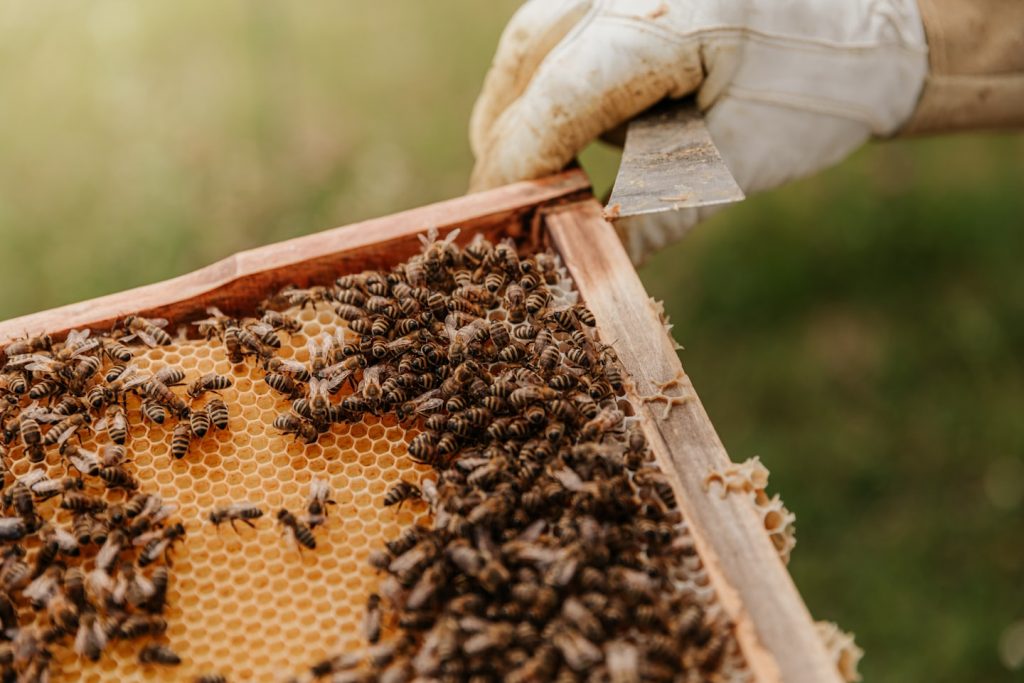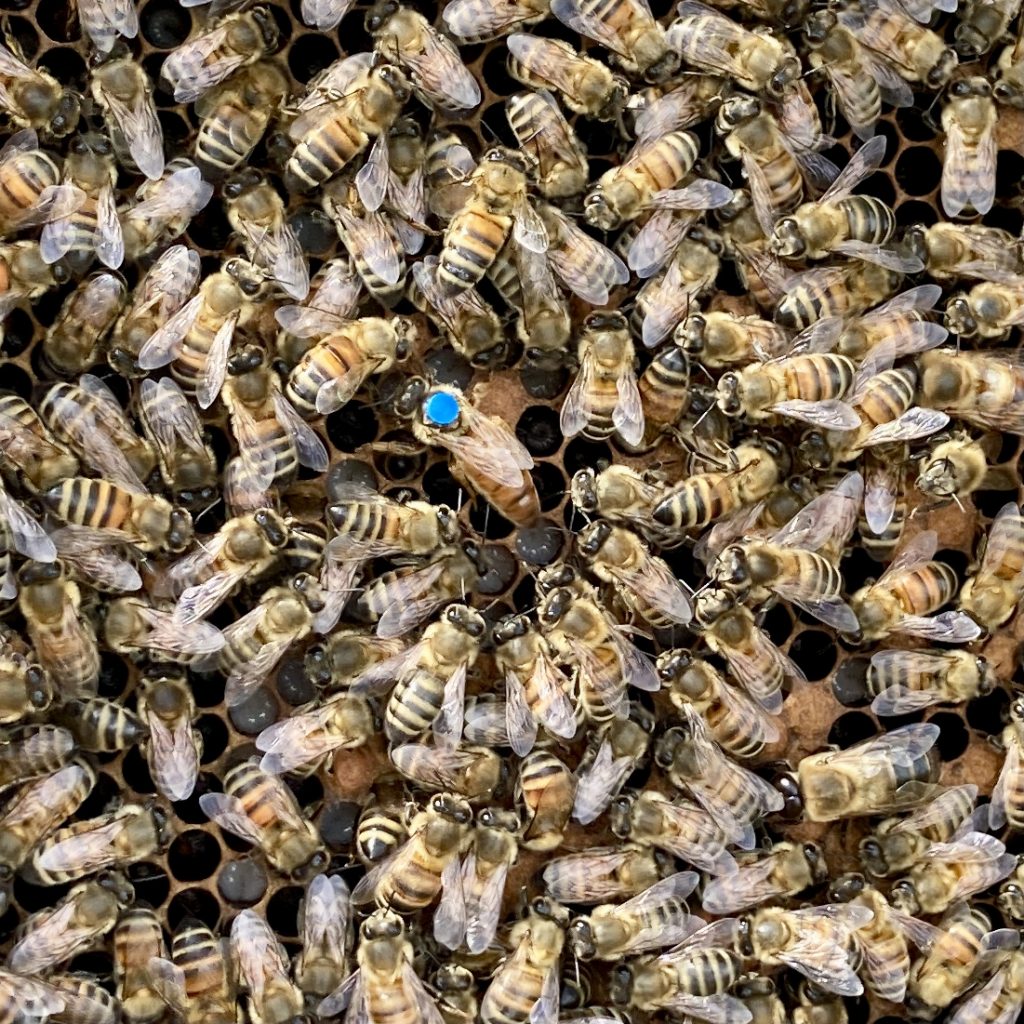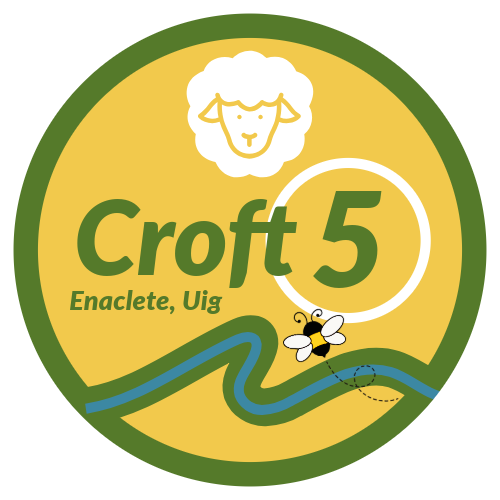
What Can Bees Teach a New Entrant About Land and Livestock Management?
When most people think about livestock, sheep, cattle, or hens usually come to mind. But there’s another livestock species that’s smaller, winged, and surprisingly rich in lessons for land management: the honeybee.
In our ever changing world it is hard to imagine a creature that has survived for over 100 million years, and has been utilised and domesticated for circa 9000 years. Bees have been part of crofting and smallholding life for generations. In UK and the Scottish Highlands straw skeps were once kept close to cottages producing modest honey yields and supporting local subsistence; so historically speaking, beekeeping is nothing new to farmers, smallholdings or even individual households.
Beekeeping—or bee farming—shares many of the same principles as traditional animal husbandry. In fact, managing bees can serve as a valuable introduction to broader crofting practices, from pest control to forage, overwintering to supplemental feeding, planning to seasonal rhythms, notifiable diseases and animal health. For traditional crofters considering diversification, bees offer more than just honey—they offer overview, pollination, and long-term sustainability.
Bees Are Livestock Too
Honey bees are not “wild” in the context of a managed hive. They’re farmed animals, subject to husbandry, needing regular checks and active disease control.
Honey bees are considered livestock by Defra (the Department for Environment, Food & Rural Affairs) in the UK. This classification is primarily due to the role honey bees play in food production and agriculture through pollination. The Bees Act 1980 reflects this classification by empowering authorities to control pests and diseases affecting honey bees, similar to how they manage other livestock.
As with sheep, cattle or other livestock, good bee farming involves:
- Health monitoring: Checking for Varroa mites, Nosema, or foulbrood.
- Treatment regimes: Including formic acid, drone brood removal, and careful queen management.
- Seasonal husbandry: Preparing hives for winter, splitting hives in spring, and managing swarming.
These responsibilities are not dissimilar to managing a small flock of sheep or keeping hens: monitoring parasite loads, providing shelter, ensuring nutrition, and reacting quickly to signs of disease and the usual necessities of stock control and management. Bees demand care and management, and in return, they thrive just like any other livestock.
Like I say, they are a domesticated creature. At least, that is, until they decide it’s time for them to swarm!
The Hive as a Model Society
Each bee colony functions like a miniature farming community:
- The Queen is the breeding nucleus, like a prized ewe or pedigree cow.
- Worker Bees are the labour force—nurses, foragers, guards, caretakers and even undertakers; much like the roles of a crofter!
- Drones play a reproductive role, much like breeding rams or bulls.
Every bee has a specific job. This job changes as their time in the colony progresses and a new bee takes over the previous role. Their society runs on communication, division of labour, and resource management. An impressive structure that manages all of this in tune with the seasons, the hours of daylight, the fluctuating availability of nectar, and the Great British weather.
Over the millennia mankind has sought to replicate this hierarchal structure; time will judge quite how successful we have been. It seems that we are currently in the process of destroying the very foundation of our colony. However I do believe we have a lo to learn from the humble honey bee.

Forage, Grazing, and Land Use
Bees and grazing livestock share a dependence on the land. Just as sheep need healthy pasture, bees rely on diverse nectar sources. Poor forage weakens colonies, much like poor grass affects ewe condition.
Integrating bees into your land use plan encourages:
- Wildflower planting in field margins and rough ground
- Strategic grazing that promotes flowering species
- Reduced chemical use (which benefits bees and soil health)
The outcome? Stronger animals, healthier ecosystems, and added biodiversity.
Seasonality and Overwintering
Just like lambing or calving, beekeeping follows a seasonal cycle:
- Spring: Colony growth, feeding, inspections
- Summer: Honey flow, swarming, queen management
- Autumn: Varroa treatment, feeding, hive consolidation
- Winter: Hive protection, minimal disturbance, hefting and supplementing of stores
This rhythm echoes livestock farming and by observing the bees they can teach us to think ahead and also to watch what is actually happening. With our ever changing climate and shifting seasons it is important to observe what the bees are actually doing, not what the calendar dictates should be happening.
Husbandry Skills That Scale
Beekeeping is often a gentle way into animal care. The practical skills gained are transferable to larger livestock, including:
- Regular inspections
- Parasite management
- Record-keeping
- Biosecurity and disease management
- Forage, water and supplementary food
- Environmental conditions
- Breeding and stock replacement
Beekeeping builds confidence in observation, intervention, and land management—skills that apply across a croft.
Bees and Crofting Diversification
Bees are a perfect fit for croft diversification, aligning with policies from:
- The Crofting Commission: Encouraging productive use of crofts and diverse income streams
- NatureScot: Supporting pollinator habitats and biodiversity
- Scotland’s Pollinator Strategy (Bee Plan 2030): Promoting pollinator health and sustainable land use
With small land requirements and relatively small start-up cost, bees can:
- Boost crop yields through pollination
- Produce a high-value product (honey, wax, propolis)
- Enhance conservation goals and gain agri-environment support
They aren’t a replacement for sheep or cattle or traditional crofting practices, but they complement them both ecologically and economically. Oh, and they are fascinating creatures to observe!
In Conclusion
Honeybees aren’t just useful, they are resilient, amazing creatures that have survived for tens of millions of years. They teach us to observe, adapt, and respect the natural cycles around us. Whether you’re a seasoned crofter or a newcomer to crofting life, bees can show you how to manage land more holistically, care for animals more attentively, and appreciate the interconnectedness of all things on the croft and beyond.
In return for their teachings, and for our correct care and management, they reward us with honey! Delicious, golden, honey!
If you like what you read please do subscribe to our newsletter below, or head over to our blog and read more about crofting, bees, and life in the Outer Hebrides.

Leave a Reply